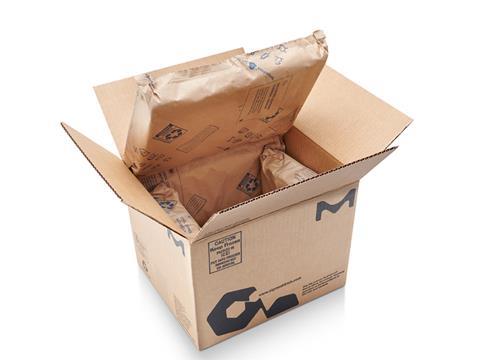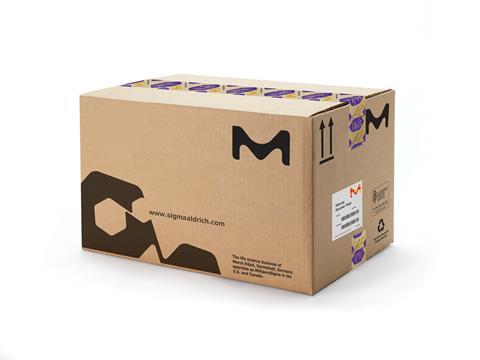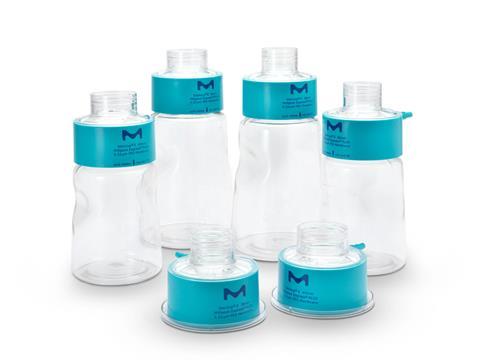
Fabien Thibault, global manager, product and packaging sustainability at Merck, gives us an overview of his company's ambitions and actions in the realm of packaging sustainability.
Across industries, sustainability is becoming an increasing expectation. From reducing emissions to increasing recycling, both businesses and consumers are looking for ways in which they can reduce their environmental impact. But when it comes to products and packaging in the life science industry, developing sustainable solutions while meeting transit and safety regulation requirements is an ongoing challenge.
Now, imagine the complexity of executing this process for more than 300,000 products and 2.5 million SKUs along with associated packaging. That’s the challenge our team at Merck is facing.
Prioritizing packaging
When developing sustainability efforts, it’s important to remember that a product’s packaging is just as important as what’s inside. Companies are looking for suppliers to take the lead in this area, as supported by our findings that 90% of our customers worldwide considered sustainability important and that 43% of them already have sustainability as part of their purchasing decision criteria. Even if packaging generally has a lower environmental impact than the other phases of the product life cycle, it is what our customers raise first, because it is one of the most visible and tangible impacts for them.
With this in mind, we needed to ensure that the packaging of our products is sustainable to help our business and customers reduce environmental footprints and costs. This is especially crucial given the volume of packaging required for the approximately 30,000 packages that we ship to customers globally each day.
To tackle these packaging sustainability challenges, we launched the SMASH Packaging plan in 2019. This initiative is based on three key pillars: the optimization of resources, the use of more sustainable materials, and the development of a circular economy. To drive improvement, we set specific goals and targets in 2022 that address both the development of new product packaging and the improvement of existing product and distribution packaging.
To date, we’ve already reduced corrugated and plastic packaging by more than 100 tons through the completion of several packaging improvement projects at our main distribution sites. We have initiated our zero deforestation plan to demonstrate that our wood and fiber-based packaging materials do not contribute to deforestation, through responsible sourcing practices, sustainable forestry certification and increased use of recycled materials.
We have also activated our expanded polystyrene (EPS) reduction program, resulting in the replacement of 3 million EPS inserts with molded pulp inserts for the shipment of our glass reagent bottles. Through this program, we also executed the recent pilot implementation of a greener cooler that meets our requirements for effective cold chain shipment and is certified recyclable alongside corrugated materials.
In parallel with these global initiatives, through which we are aiming to increase the sustainability of existing packaging, we have also revamped our Design for Sustainability (DfS) Development program to help bring innovations to both new products and packaging.

Positioning product and packaging development as one
We prioritize sustainable design with our DfS Development framework: a unique approach that is embedded in our Product Development Process (PDP) to drive sustainability into products, systems and services. A series of actions are conducted at each step of the PDP to attest to minimal environmental impacts in the product life cycle. It is supported by our DfS scorecard, which helps drive and assess quantifiable sustainability improvement in our products.
We recently transformed DfS Development from an internal initiative into a redesigned framework, with new categories and sustainability aspects that strengthen the scoring system and bring a new level of transparency by highlighting the sustainability features of our greener alternatives products.
Through our revamped DfS Development approach, our teams have had the opportunity to implement the new SMASH Packaging sustainability standards directly within the PDP. Before anything else, we ensure that our product development teams develop the product and its packaging jointly in order to optimize both product and packaging design, and potentially limit packaging requirements. With new criteria, guidelines and tools, our product development teams have the resources they need to innovate more sustainable packaging for our new products.
Close-up on the R&D process
Through our DfS Development framework, we collaborate with customers and our own researchers to find sustainable solutions that contribute toward a healthier ecosystem and safer world. By using our DfS and SMASH Packaging standards to guide the R&D process, we aim to help lead the life science industry toward prioritizing sustainable designs.
Through our PDP, we can address and minimize environmental impacts with a life cycle approach. The DfS Development framework is applicable to all of our product development projects and can be broken down into four key steps: review life cycle impacts and customer voice, assess and select target criteria, assess product development and sustainability, and share impacts.
Examples of this process in action include the Stericup®E and Steritop®E sterile filters, which significantly reduce the amount of plastic per unit by up to 48% and related packaging by up to 69% compared with standard filtration devices. Additionally, the sustainability characteristics of the packaging materials were increased with the implementation of biodegradable plastic bags and sustainable forestry certification for the corrugated boxes and inserts.

To drive sustainability improvements and make informed changes, scientists and R&D teams need to measure these efforts. What’s unique about the DfS Development process is that it outlines specific steps to be conducted by the product development team to reach sustainability effectively.
Sustainability can drive innovation
When launching these types of initiatives, it was important for our organization to recognize that the product development teams were not necessarily sustainability experts. In their role, their first priority is to meet and reconcile technical, quality and cost requirements. Therefore, the biggest challenge is continuously implementing these sustainable approaches across new product development activities.
To achieve the SMASH and DfS standards, we have not only educated the development teams, but also have armed them with actionable tools and support — including guidelines, brainstorming sessions, Life Cycle Assessments, case studies and scorecards. Together, these resources have helped (and continue to help) them efficiently address and minimize environmental impacts of products and packaging.
By implementing these frameworks, the development team becomes more familiar with the product life cycle and its constraints. Once they learn about these characteristics, they can create more innovative ideas and solutions for the next product.
To date, we have about 150 active product development projects and, on average, around 30% meet at least three of our sustainability aspects from the DfS scorecard. While the implementation of our new SMASH and DfS Development frameworks will take time, we’re committed to innovating more greener alternative products to reduce our environmental footprint — and help those in the industry do the same.











